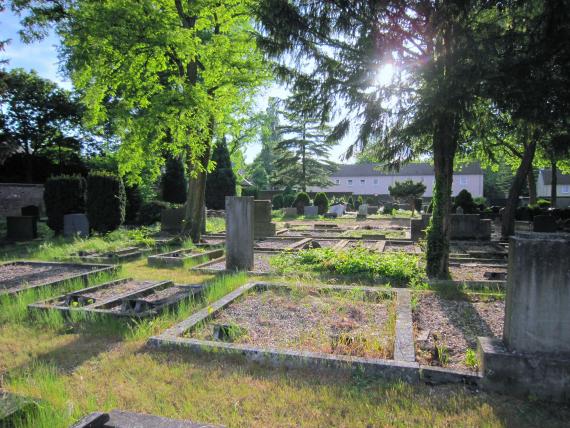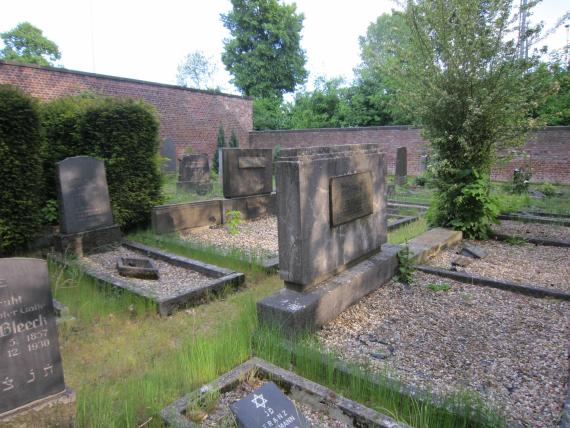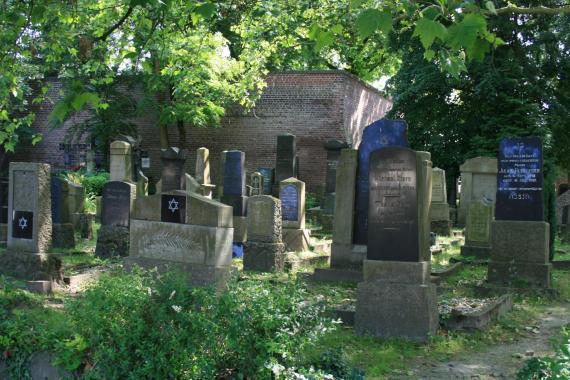Hügelstraße
41061 Mönchengladbach
Germany
The Jewish Cemetery is located on Hügelstraße in the Westend district of Mönchengladbach (North Rhine-Westphalia) and is the largest preserved cemetery in the urban area of today's Mönchengladbach.
In 1841, the Jewish community acquired the land with an abandoned gravel and sand pit from the merchant Busch. The land acquisition replaced an older cemetery, which must have been located nearby, but can no longer be located. The oldest surviving gravestone is dated 1875 (first burial 1841).
On June 1, 1891, the Jewish community acquired larger pieces of land adjoining the south side of the burial ground. The seller was the non-Jewish wine merchant and owner of a ring kiln brickyard Julius Friedrich. The purchase required 6000 marks, and the city was asked for a subsidy. Thanks to the intervention of the city councillor Franz Brandt, a grant of 1500 marks was given. Since Hügelstraße (until 1930 Hohlstraße) was to be extended at this time, the Jewish community undertook to cede to the city that land which fell within the building lines. In return, Frederick undertook to build a new cemetery wall.
In 1899, additional adjacent land was acquired (total size more than 1 Ha).In 1914, a mortuary was built to the south.
During the Nazi period about 300 gravestones were stolen by local stonemasons, after the end of the war only about 50 pieces could be brought back.
After 1945, part of the land had to be sold to the city. Here the Ernst Reuter sports complex was built.
A memorial for the Jewish victims of National Socialism was inaugurated near the restored mortuary on November 9, 1952.
Since March 1993, the cemetery is under monument protection. In 2019/2020, the Jewish community was able to expand the cemetery by purchasing land on the north side.





Schuhmacher, Karl-Heinz: Jüdisches Leben in Mönchengladbach. Spuren in Stadt und Architektur. Mönchengladbach 2021.
Waldecker, Christoph: Das jüdische Mönchengladbach. In: Stadtarchiv Mönchengladbach (Hg.): Vitus-Post, Nr. 8, Mönchengladbach 2004.
Add new comment